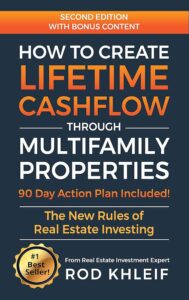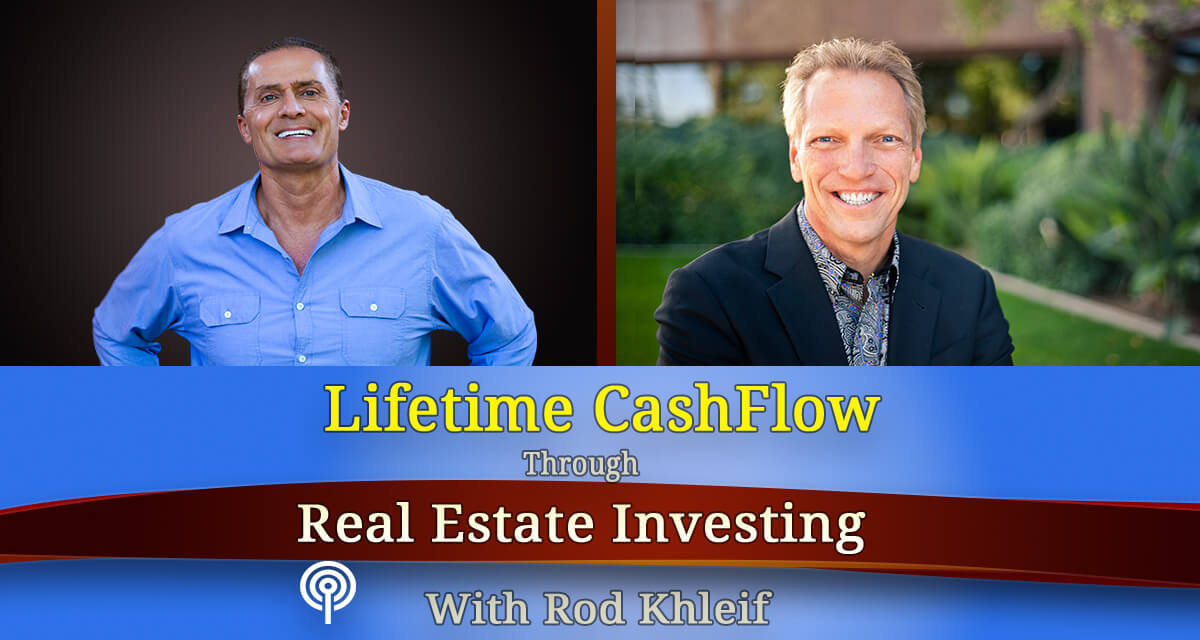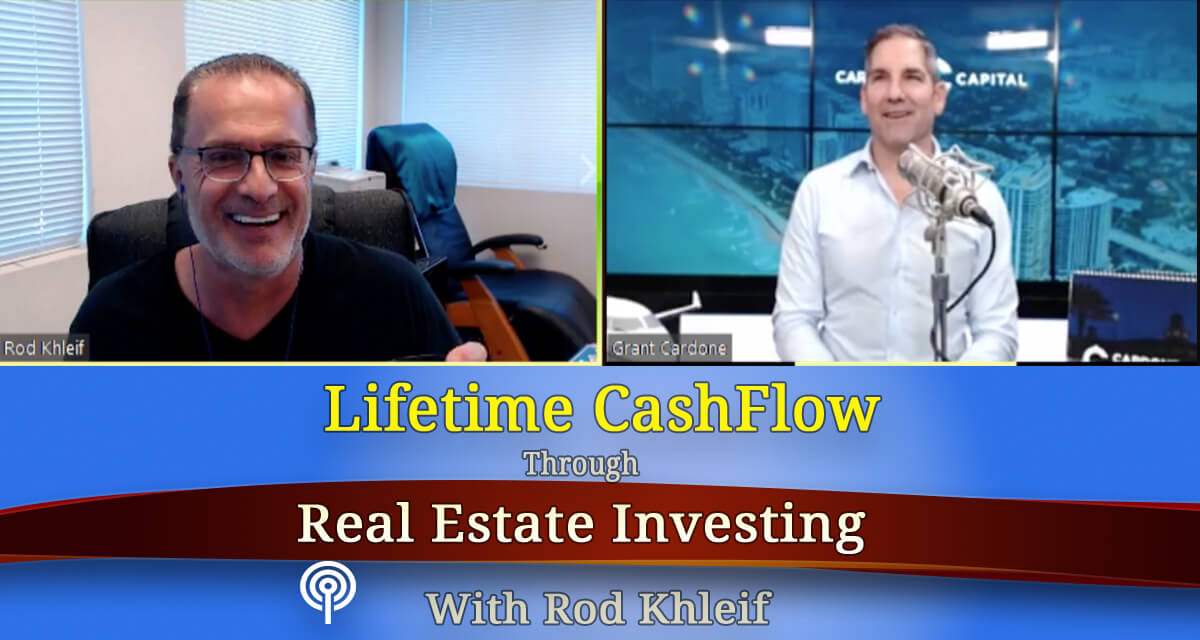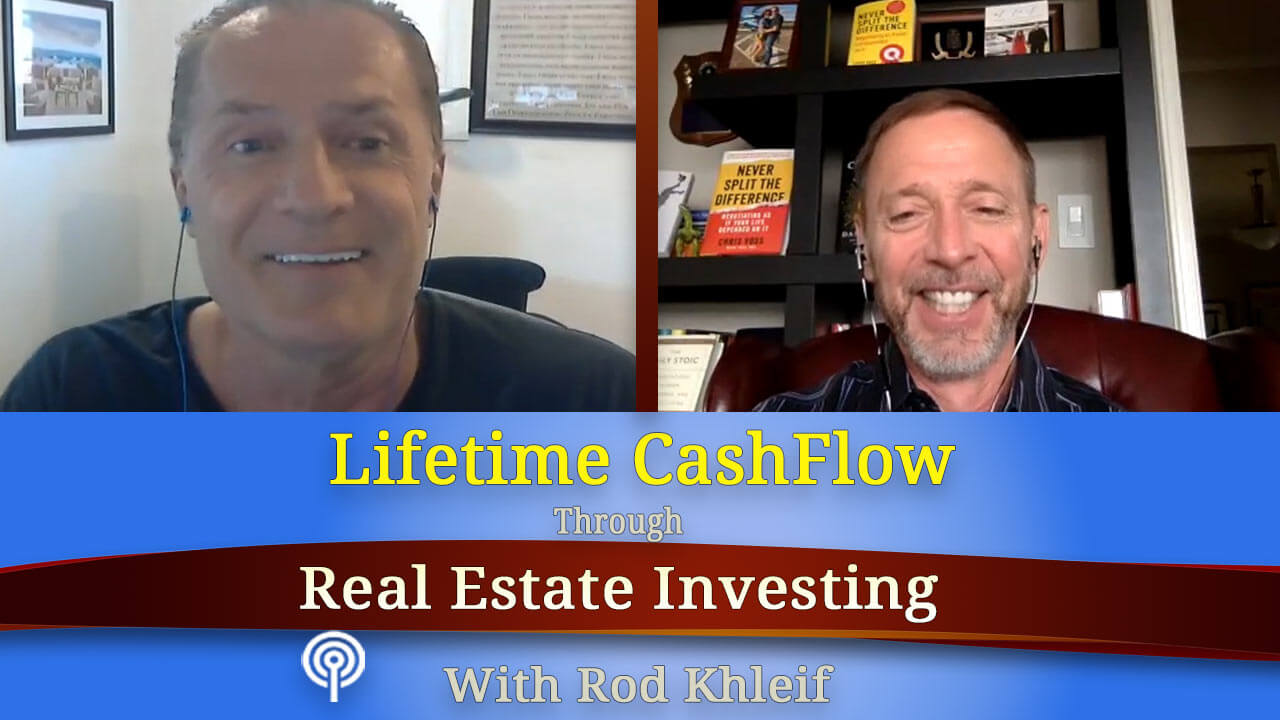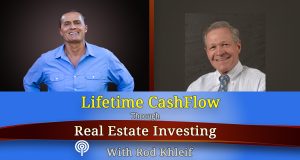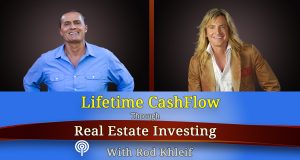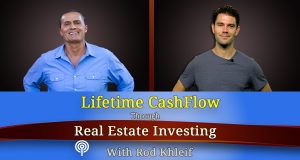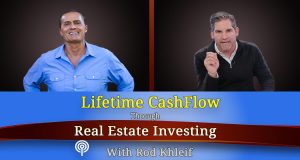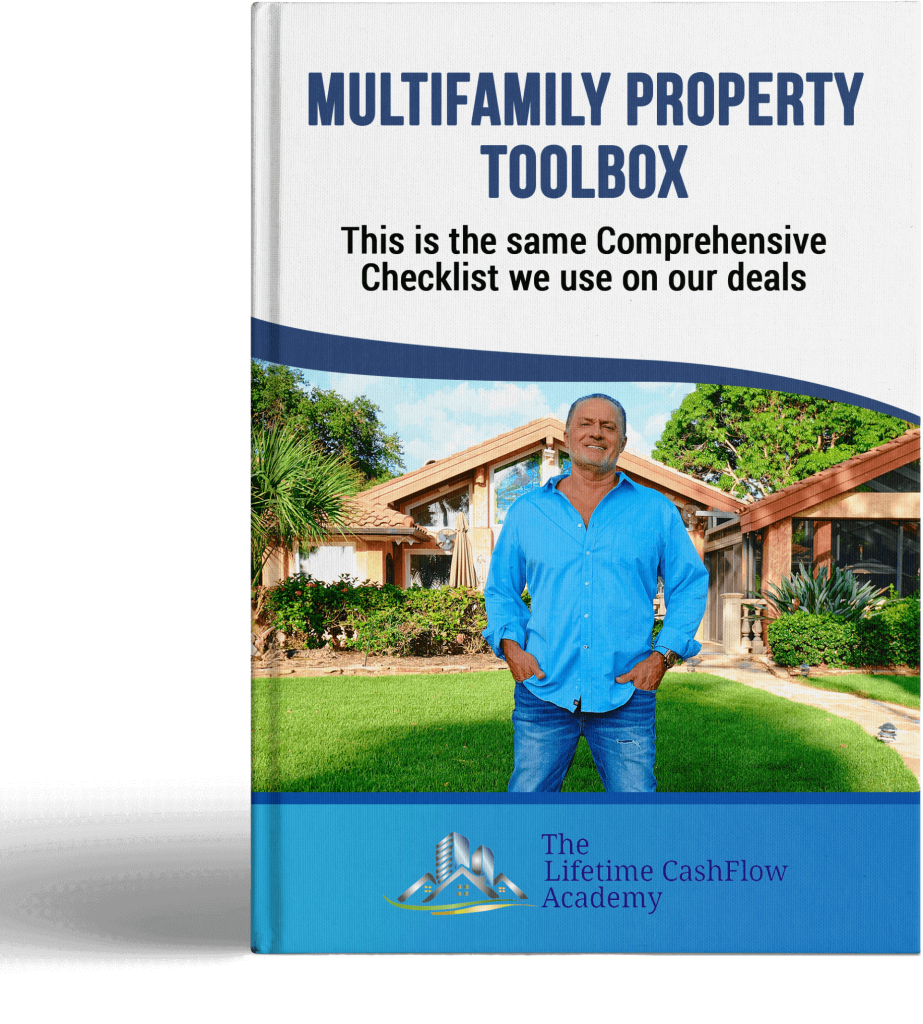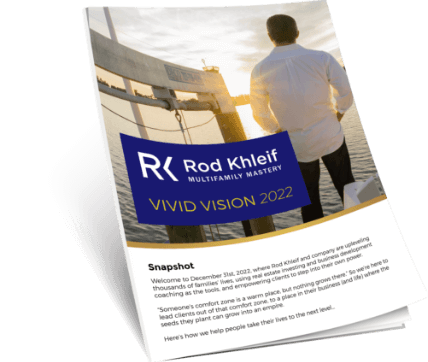Ep #117 – Helping investors finance their properties. James Eng finances over $75,000,000 in multifamily properties annually and is an investor in 2,500 units.
- Here’s some of what you will learn:
- Financed over $75 million in multifamily properties.
- Investor that is involved in 2,500+ units.
- How James can help you finance your deals.
- Differences between Freddie Mac and Fannie Mae.
- When to go with Fannie Mae.
- When to go with Freddie Mac.
- The types of properties that Freddie and Fannie will and will not do.
- When it’s difficult or impossible to get Fannie Mae or Freddie Mac financing.
- Types of questions to ask a broker to develop a relationship.
- Typical costs to expect when structuring a deal.
- When to contact a broker about a property.
- How long it takes to get a Freddie or Fannie loan done.
- How to make the interaction with a broker easy.
- When the rate increases, why does that cause equity requirements to go up?
- What is a debt service coverage ratio?
- Learn more about James at http://www.oldcapitallending.com/
- Connect with me on Facebook at Rod Khleif.
- Text Rod to 41411 or visit RodKhleif.com for a FREE copy of my book, “How to Create Lifetime Cash Flow Through Multifamily Properties.”
Do you want to learn more about Multifamily Real Estate Investing? Work with Rod in the Lifetime CashFlow Academy’s Multifamily Course & Coaching Program
Full Transcript Below:
Ep #117 – Helping investors finance their properties. James Eng finances over $75,000,000 in…
Welcome. This is the Lifetime Cash Flow Through Real Estate Investing Podcast. This is where you’ll learn strategies to help you achieve lifetime financial freedom through real estate investment. Your host, Rod Khleif, has owned over 2,000 homes and apartments. And he brings experts in all aspects of real estate investment and management on to the show. Now, here’s your host, Rod Khleif.
Rod Khleif: I have a couple of house keeping thing for you guys. I’ve been waiting to get some testimonials for my book, so I still haven’t put it on Amazon. Now, if you haven’t gotten your free copy, make sure you do. It’s 200 pages, it’s total content, there’s no fluff in it. And everything you need to know about multi-family real estate. You can get it at my website, rodkhleif.com or you can get it by texting ROD, R-O-D, to 41411.
I also wanna mention to you that we have some partnership opportunities coming up. We’re actively buying small apartment buildings and mobile home parks. I’m always looking for people to partner with me. If you have an interest in potentially partnering together on a deal with me, shoot me an email to partner@lifetimecashflowacademy.com. That’s partner@lifetimecashflowacademy.com.
We’ve got a lot of activity happening so if you have any interest in potentially partnering with me on some deals, and looking over my shoulder as we do them together, send me an email. Now, it’s an auto responder email, so almost immediately, you’ll get an email back from us that has a link to our calendar. This is a link to set up a call with us to discuss partnering on our deals.
Either myself or my partner Robert will get on the phone with you and get into some more detail about these opportunities that are coming up. That email again is partner@lifetimecashflowacademy.com. I know that’s a lot.
Anyway, I don’t know if you’ve heard, we’re had over a million downloads on this podcast. I am so incredibly grateful to you guys for your amazing support. During the last, it hasn’t even been a year yet, but during the last say 11 months; I’ve spoken with or communicated with literally about a thousand of you. I can honestly say it’s been an incredible joy. I’ve really enjoyed connecting with you guys.
So many of you that I spoke with asked me for coaching or to mentor, or asked me to create a course or some training materials. I had never really planned to do that but when so many of you asked, I finally decided to go ahead and do it.
I hope you realize, especially if you’ve read my book that I don’t do anything half way. I really try to add absolutely as much value as I can. I’m excited to say, just within a couple of weeks, I’m gonna be launching what I can humbly say is the best multi-family training and coaching program available anywhere.
I’ve designed it to help you quickly crush it in multi-family real estate investing. Help you build your own lifetime cash flow as fast as possible. If you wanna get some more information on that when it comes available, just text the word CRUSH, C-R-U-S-H to 41411. Make sure we’ll send you the info when it comes up.
Lastly, I wanna ask you guys a favor. If any of you listening, have purchased a multi-family property as a result of the things you’ve heard or been inspired by in this podcast, please email me at rod@rodkhleif.com. That’s r-o-d-@ r-o-d-k-h-l-e-i-f, as in Frank, .com, and tell me about the property that you bought.
I can’t tell you how much I enjoy getting those emails, and have conversations with you guys about your deals, so please give me that gift, when you take action and buy a property. Again, that’s rod@rodkhleif.com. Alright, let’s get to it.
Rod Khleif: Welcome to another edition of How to Build Lifetime Cash Flow. I’m Rod Khleif and I’m thrilled you’re here. I know you’re gonna enjoy the gentleman we’re interviewing today. This is something we haven’t done yet. Shame on me, I should have done this a long time ago.
His name is James Eng, and he’s a mortgage broker and the Senior Director for Old Capital in Dallas, Texas. It’s long over due for me to have a mortgage broker on the show, so we’re really gonna get in and I know we’re gonna get a ton of value to you guys. James, thanks for being on the show.
James Eng: Hey there, thanks, Rod.
Rod Khleif: Absolutely. So I know that you have a ton of business. You’ve financed over $75 million in multi-family properties. You’re also an investor in Texas, you’re involved in 2500 plus units. I really think that we’re gonna talk about how you can help people finance their deals, and we’re gonna drill down on that if that’s ok with you.
James Eng: No, that’s great. I think you’re doing a great job on the podcast, in educating investors, so let’s just jump into it.
Rod Khleif: Awesome. Awesome. So let me ask you a couple of questions before we dig in. You’ve been a passive investor in Texas for how long? How long have you been in the business?
James Eng: It’s been about two and a half years as a passive investor. I started my career really at GE Capital and spent 10 years there going through their corporate finance leadership program. And then I was a loan underwriter for about eight years there. Then moved over to Old Capital, and really started looking at multi-family investing.
The best way for me right now has been in passive. Then I found general partners and invested into their deals. Now, I’m in 2500 units across, mostly in Dallas, and one in San Antonio.
Rod Khleif: Fantastic. Fantastic. Okay. Let’s talk about Freddie and Fannie, because anybody doing larger deals, that’s the financing that they’re gonna seek out first. So let’s talk about the differences between the two, and where you recommend one over the other.
James Eng: Okay. So Fannie Mae, really is… They’ll do over 50 billion in loans this year, in multi-family products. Fannie Mae, we will go to them when, number one, the property has to qualify, so the property needs to be 90% occupied for the last 90 days. Then the loan amount typically needs to be over a million dollars.
Rod Khleif: Right.
James Eng: So those two criteria, in terms of the property, have to qualify but then also the borrower needs to qualify. The borrower needs at least a year of multi-family experience for Fannie Mae. And then the size of the property also needs to be comparable to what they own now.
Rod Khleif: Okay.
James Eng: So Fannie Mae does not want you to do… They don’t want it to be your first go around on the multi-family deal, typically, is not with Fannie Mae.
Rod Khleif: Okay. So for a new investor, they’d need to bring in a sponsor that has a similar type property, give up a piece then they might be able to approach Fannie Mae. How is Freddie Mac different?
James Eng: Freddie Mac has a program, so they have a Freddie Mac Small Balance Program, that is $6 million and under. That program, you can be a first time investor but the property needs to qualify again, at 90% occupied for the last 90 days. But the unique thing I think on that one is, you cannot roll the rehab into the loan.
On Fannie Mae, you can do the total cost up to 80% of the total cost, whereas Freddie Mac, they’re gonna constrict you to 80% of the purchase price.
Rod Khleif: Okay, with Fannie Mae, you can roll in the rehab and it’ll bounce your loan amount up proportionately, which is a fantastic benefit. With Freddie Mac, what’s the lowest they’ll go? You told me the maximum…
James Eng: One million.
Rod Khleif: One million.
James Eng: One million.
Rod Khleif: Alright.
James Eng: One million on Freddie Mac.
Rod Khleif: Okay. Are there particular types or classes of properties that they won’t do?
James Eng: They really… The big thing for them is affordable housing and workforce housing, which is where most investors are looking. So they’re really in the B and C product type.
Rod Khleif: Okay.
James Eng: In terms of the class of the stuff built. Here in Texas, really 60s, 70s and 80s is where we do a lot of business because it seems like those are the properties that investors are looking for, in terms of returns. And then also Fannie and Freddie are very comfortable in those areas.
The properties they won’t do are really in the rougher demographic, rougher neighborhoods, where there has been crime on the property. So a big red flag is if there’s been a murder or some sort of serious crime on the property in the last year. It is very difficult, if not impossible, to get Fannie/ Freddie financing on those properties.
Rod Khleif: Interesting. You might have a, just as a what if… What if you got a property that hasn’t had a serious crime, but it is in a tougher area? Is that just a question mark? Is it just gonna be subjective, based on who’s looking at the deal?
James Eng: Right. So they’ll run crime reports on that property. They’ll talk to the city. They’ll figure out if that location, they’re comfortable with. And that’s something we can vet sort of early in the process just to see if they have a problem with it.
Rod Khleif: Okay. Okay. Let’s say, I’m a new investor. I wanna establish a relationship with a good broker like yourself. What sorts of questions should someone ask you to determine if it’s a good fit, and to develop a relationship?
James Eng: I think the first thing is really figuring out if they’re gonna be an independent owner or if they’re gonna be a syndicator.
Rod Khleif: Okay.
James Eng: Right. Because an independent owner is gonna have to qualify for the loan on their own net worth and liquidity.
Rod Khleif: Right.
James Eng: So Fannie Mae and Freddie Mac are gonna want the net worth of the individual to be equal to or greater than the loan amount. And then they’ll also gonna want liquidity of 10% of the loan amount after the down payment.
Rod Khleif: Okay.
James Eng: Depending on… Usually, the first thing we ask people to send us is their personal financial statement. Once we get their personal financial statement, we can really give them an idea of what sized loan they can qualify on their own.
[00:10:00]
James Eng: If that property is large enough, let’s say, your net worth is $5 million, and you have 500,000 in liquidity, and that’s enough for you to go buy 100 units on your own, then that’s the path we’re gonna take you down.
But if you’re gonna syndicate it, then you’re gonna have to look at not only that one investor but then what other key principles are they gonna bring on their team, to qualify for the loan.
Rod Khleif: Okay. Okay, so it’s not a bad idea, correct me if I’m wrong, for an investor to approach someone like you and go through that pre-qualification process to see what might be the best direction. And so you can let them know if they need to bring other people in on their team to pass muster with the lenders.
James Eng: That’s right. I mean, it makes it a lot easier if you know what you’re qualified for so that when you go and talk with listing brokers and other sellers on properties that you know you’re qualified to get the loan, if you get the property under contract.
Rod Khleif: Okay. So back to my question, if someone is seeking a broker like yourself, are there any questions they should ask that broker to determine their level of experience, or I suppose it’s probably common sense? Maybe you just ask how much volume they’ve closed. Are brokers typically locked into particular market areas, or do you do loans all over the country? Just help me out on if someone is looking to start a relationship with a broker.
James Eng: I think the question you should ask is, number one, how much in volume they’ve done, is a good first question. But then also, is that person financing properties that you wanna finance. If you go to a loan broker and they’ve done a billion dollars this year, and that’s been $200 million deals and $100 million deals, that’s probably not the right guy for you.
Rod Khleif: Right.
James Eng: Because he’s not gonna spend the time to work with somebody buying a million dollar property. So that’s number one, sort of average deal size and what types of properties do they finance?
Rod Khleif: Okay.
James Eng: Are they a specialist in multi-family? We do probably one out of every three B and C apartments here in Dallas. So multi-family is our specialty. That’s what we focus on. Any new Fannie/ Freddie products out there, we know about, and so you have to keep on top of that.
The next thing besides loan volume and size of deals, would also be, talk to past clients. I always get referrals from past clients and testimonials from them. They’re more than welcome to talk to any future clients.
Rod Khleif: That’s great advice.
James Eng: I will… So if you wanna talk to any of the individuals that I’ve worked with in the past six months to a year, on any of these deals, I can give you their name and number and reach out to them. I think that’s the proof in the pudding, it’s do they still wanna work with you? I mean, that’s the questions I would ask any of his clients. After working with this guy and closing the loan, would you work with him on the next transaction?
Rod Khleif: Fantastic. Now that’s great advice. So let’s say somebody’s out there, and they find a 32-unit and they happen to get it in a million to two million range. What typical cost can they expect on the loan side? Not the property cost so much but maybe go through all the typical costs that they can expect to pay upfront that need to factor in to how they structure the deal and whether or not they’re going to take an acquisition fee and off-set some of those costs.
Well, actually the cost will be billed right back in, but just for their time and whatnot. Go through the cost for us. Break down what’s typical on a larger… Well, that’s a smaller deal for you, but for some of the investors on my show, that would be a very large deal. But in the million to two million range?
James Eng: Sure. Usually, we like to use about three to 4% in closing costs on the loan amount. That’s gonna be, typically the 1% origination fee on the loan. That’ll be third-party fee, such as engineering reports, Environmental Phase 1, appraisal, that’s usually $10,000. And then you’re gonna have 1%, usually is for title and legal.
Rod Khleif: Okay.
James Eng: So it adds up to about 3% of the loan amount, on closing costs. That’s pretty consistent, as you move up the scale; it will slide down to about 2%.
Rod Khleif: Sure.
James Eng: If it’s under a million, it’ll be closer to 4%. But 3% is a good number for closing costs. So you can take your purchase price, plus your rehab, and then times .03, would give you a good number for closing costs.
Rod Khleif: Okay. Fantastic. For those of you that don’t know it, an Environmental Phase 1 is a report that you have to do on any property that you’re gonna finance, to make sure there’s no toxic waste and whatnot. If they find something then they’ve got to do a Phase 2 to make sure that… Because what’s scary about those is that whoever owns that property is responsible.
Even if you’re buying a property, cash, you should always, in my opinion, do a Phase 1 and make sure that there’s nothing toxic there. There was no a dry cleaner or something.
Okay. So those are the costs. Talk about the sequence. Let’s say, we talked about getting pre-qualified ahead of time. They should seek you out and get an idea of what they can qualify or can’t qualify for, and put a team together.
Let’s say you were out there looking at properties, at what point should they engage you? And then what’s the typical sequence, for you facilitating the financing for an investor?
James Eng: Usually, when an investor decides that they’re gonna make an offer on a property, they will reach out to us and send us the current rent roll, the trailing 12 financial and in their financial statement, and resume. Then we will go out and source a loan for that particular deal and provide them a term sheet that they can provide with their offer.
Then, if the offer is accepted, then it usually takes anywhere from 45 to 60 days, to complete the loan and get it approved and close. Within those 45 to 60 days, that is where you’re working intimately with the lender and myself, to get all the due diligence in, in terms of appraisal, engineering, environmental report, and then also the borrower due diligence.
So Fannie Mae and Freddie Mac are gonna have paperwork in terms of your balance sheets, your net worth and liquidity, bank statements, tax returns. They’re gonna ask for those things throughout that process to underwrite you as a property owner, but then also underwrite the property financials.
They’re gonna do an inspection on the property over that time frame and then they’ll submit it for approval. Then once it’s approved, it usually takes about a week from there to close the loan.
Rod Khleif: Okay.
James Eng: We usually like to tell people, “If you’re submitting an LOI or letter of intent, right now, usually about 60 days, from beginning to end is enough time to get a Fannie or Freddie loan done.”
Rod Khleif: Okay. Fantastic. Okay, now, when you’re dealing with investors, what makes your like easier?
James Eng: If an investor comes to us and tells us, “Look, I have my whole team ready to go, and this is the pro forma for the property. These are the historical financials. This is how, what we’re gonna do in terms of the rehab and then execute that plan.” That makes my life a lot easier.
So somebody coming in, they’ve educated themselves on the market, they’ve educated themselves on the property, and they need assistance finding the loan, but outside of that, they have their whole team ready to go.
That makes the process a lot smoother, and it helps getting the loan approved, because when the underwriter for that loan asks for specific things whether it’s borrower entity docs, or the rehab budget, or the pro forma for the rent, we have all that information ready to go.
In this business, it’s people who understand numbers and people who are organized that can get deals done quickly. That will translate into more and more deals for you; if you’re able to perform on your LOI that you present.
Rod Khleif: Sure. Absolutely, and it either builds or destroys your reputation. What words of wisdom would you share with an aspiring commercial real estate investor? Let’s say somebody wants to syndicate. They’re motivated. They wanna get something done, any advice that you would give them?
James Eng: I think the first thing is constant learning. Listening to podcasts like this is definitely step one in terms of education. That gives you a sort of a base foundation.
The second piece to the advice would definitely be to find a mentor in the space. Someone that has done deals before; invested in the area that you’re investing in or the type of property that you’re investing in. Because B and C multi-family is very different than Class A multi-family.
Rod Khleif: Sure.
James Eng: Understanding the B and C space, and then also really gathering your team is probably my third thing. It’s start figuring out who’s a mortgage broker that you can trust, figure out a property manager that you can trust. Start building relationships with listing brokers.
The fourth thing is really just, you have to be proactive and take action in this business.
[00:20:02]
James Eng: As a mortgage broker, I don’t get paid until a deal closes. And the same way, real estate investors don’t make money until deals close and they make it into the finish line. So being very proactive and pushing until you hit closing.
Rod Khleif: Yeah, now that’s great advice. I should have asked this question before that, but let me ask it now. What’s the most challenging part of what you do? As it relates to investors.
James Eng: The most challenging part is, really, when something comes up in the due diligence, and the borrower has to make a decision on whether or not they’re gonna move forward with the deal. What changes do they have to make either to the org structure, or raising more equity, that becomes most challenging.
Rod Khleif: I see.
James Eng: Most of these deals are pretty stabilized and there’s not a lot of moving pieces but if something comes up in a deal that we didn’t know about during due diligence, that’s when it becomes most challenging. So the borrowers who have not only plan A, but plan B and plan C ready to go, in case it doesn’t work out is the guys who do the best in this business sometimes because they’re able to adjust.
A good example is, when Trump was elected at the end of last year, interest rates went up 50 to 60 basis points.
Rod Khleif: Right.
James Eng: If you are not prepared with more equity into these transactions, you were left not being able to close loans, not being able to close deals. So the guys who were able to step up and raise the additional equity to get deals closed in the fourth quarter… Those brokers remember those borrowers and those investors.
Rod Khleif: Let me ask you a question, so my listeners understand. Why did the rate increase cause equity requirements to go up?
James Eng: For Fannie Mae, their rate is tied to the 10-year Treasury. So 10-year Treasury was closer to 1.8% and now it’s closer to 2.4, today. When that goes up, the debt service on these properties, the debt service on these loans goes down. And so the minimum debt service on a lot of these deals, on acquisition, is 125. So 125,000 in…
Rod Khleif: You’re talking about the debt service coverage ratio.
James Eng: That’s right.
Rod Khleif: Would you tell my listeners what that calculation is, just so they understand?
James Eng: Sure. It’s your net operating income, over the debt service.
Rod Khleif: Right.
James Eng: So let’s say your net operation income was a 125,000 and your debt service was 100,000 then you would have a 125 debt service coverage.
Rod Khleif: So that’s the minimum that they’ll take, right?
James Eng: That’s the minimum… That’s determining your loan size.
Rod Khleif: Okay.
James Eng: If the debt service goes up to let’s say 110,000 all of a sudden, the property is still the same property, and it’s still throwing off 125,000. But now that the debt service went up because of the large increase in interest rate, the loan cannot be the same size that you thought it was in September or October, before Trump was elected.
Rod Khleif: So the loan has to be reduced to get that debt service coverage ratio, back to 125. Got it.
James Eng: That’s right.
Rod Khleif: Now, give an example of how something you might discover in due diligence could impact the loan amount, and why you should have a plan B.
James Eng: Sometimes, during due diligence, we’ll order an appraisal, and it’ll come up short.
Rod Khleif: Okay.
James Eng: Just because you’re buying it for a certain amount, sometimes the appraisal will come in short, and the loan is typically, the max loan is usually 80% of that appraised value. So if it comes up short…
And then another thing that can come up is really during the engineering report. If the engineer goes out there for the lender and they say maybe it’s electrical issue or parking lot, or roof that needs to be replaced something that you didn’t catch in your initial underwriting. There could be a hold back of the loan of 100 or 200,000 for a new roof.
That changes your metrics. That changes how much you’re having to invest in that property, day one.
Rod Khleif: Alright. Or how much equity you have to raise and if you haven’t planned for something like that. Great. Great. Well, any books or training that you might recommend to an aspiring commercial real estate investor? Are there any books that you like to gift?
James Eng: Obviously, Rod has a book. So I know that would be great place to start.
Rod Khleif: No, no, no. that wasn’t… I totally was not plugging for my book…
James Eng: [chuckles] I think everyone obviously should read just your standard Rich Dad, Poor Dad book.
Rod Khleif: Sure.
James Eng: I think to start it off. But then also… I like the mindset of, I think it was the Keller Williams group that came out with The One Thing.
Rod Khleif: Oh yeah, The One Thing. Yeah, that’s an awesome book.
James Eng: The One Thing, because I think, where it started for me really was, if my focus coming, when I left GE Capital and came to Old Capital, really was on how I become a better investor, and how do I create passive income through real estate.
If that’s your first thing, and that’s what you focus on, then I think you’ll become better and better at it and the decisions you make will stream out of that.
Rod Khleif: Love it. Love it. Now, that’s great advice. And thank you for plugging my book, that totally wasn’t where I was going with that, but since you mentioned it… It’s still free guys. So if you want it, text ROD to 41411. It’s 200 pages about multi-family investing. I’ve gotten great reviews on it. It’s still free. I’m still waiting for a few testimonials before I print it and put it in Amazon. So get it if you want it.
Listen James, you’ve added a ton of value, buddy. I really appreciate you taking your valuable time to be on the show. I’m gonna have his contact information in the show notes, guys. If you have questions about financing or wanna develop a relationship, James Eng at Old Capital. So you’ll be able to access him, like I say, in the show notes. Thanks James.
James Eng: Thanks a lot, Rod.
Rod Khleif: Absolutely.
[music]
Thank you for listening to the Lifetime Cash Flow Through Real Estate Investing Podcast. If you’ve enjoyed the show, please subscribe, and then take a moment to visit iTunes and leave a five star rating and review. For more resources to connect with us further, please visit our website at lifetimecashflowpodcast.com. Tune in next week for our next show.
[music]




